The last decade has seen a steady rise and the popularity of rooftop solar panels! The push for renewable energy sources has increased solar energy utilisation.
These types of solar panels and solar tiles are much different than you think, having different manufacturing process, uses, and other factors!
Solar energy is reliable, long-lasting, save money on energy bills, and is efficient if the chosen types of solar panels and the environment are well-suited.
If you're stuck on which is the right solar panel for you, don't worry! We'll help you decide on the perfect solar panel based on solar panel UK cost, materials, and more!
Different solar panel types serve various demands and objectives. Here are some types of solar panels, explained.
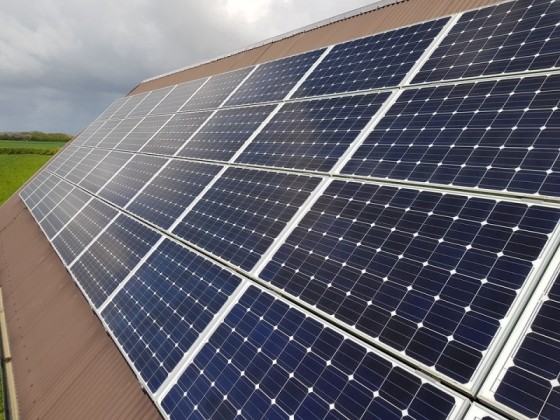
This is the purest solar panel type (made of monocrystalline silicon solar cells.) They're constructed from a single crystal.
Because it's made from pure silicon, monocrystalline panels have one of the greatest energy efficiency rates, with the most recent ones exceeding 20%.
How do these solar panels work? Monocrystalline solar panels tend to have the highest solar power output, occupy the least roof space, and last the longest.
Most monocrystalline solar panels have a power capacity of over 300 watts (W.) Of course, this means monocrystalline solar panels are also the most expensive.
Monocrystalline cells also tend to outperform polycrystalline models regarding temperature coefficient.
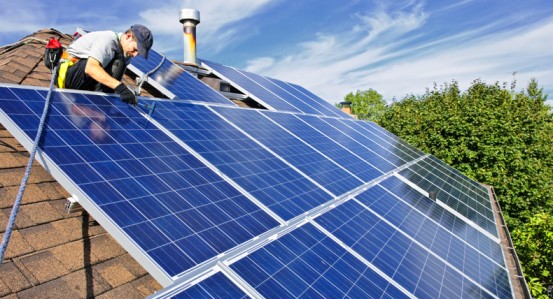
Polycrystalline panels are easily distinguished because they have squares, their angles aren't clipped, and they have a blue, speckled appearance.
These panels are made from multiple silicon crystals instead of one to speed up the production process.
Polycrystalline solar cells are created by melting raw silicon, a faster and less expensive technique than monocrystalline panels.
Polycrystalline cells are made from many fragments of pure silicon crystal. Each polycrystalline panel looks substantially different from the one next to it.
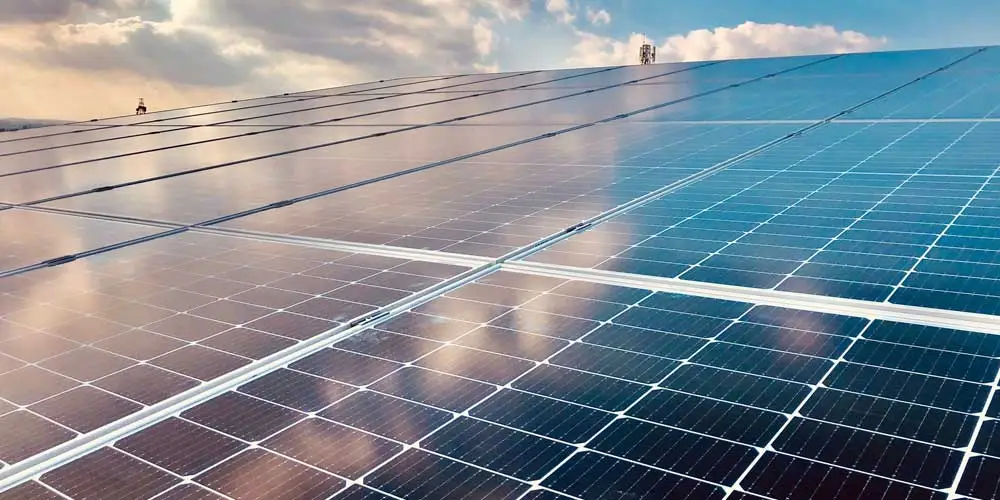
PERC solar panels are an advancement over conventional monocrystalline solar cells. It has an efficiency rating of 23%.
This relatively new method adds a passivation layer to the cell's back surface, which improves efficiency in various ways:
This solar panel type captures more solar energy in a smaller physical footprint, making them perfect for smaller homes and businesses.
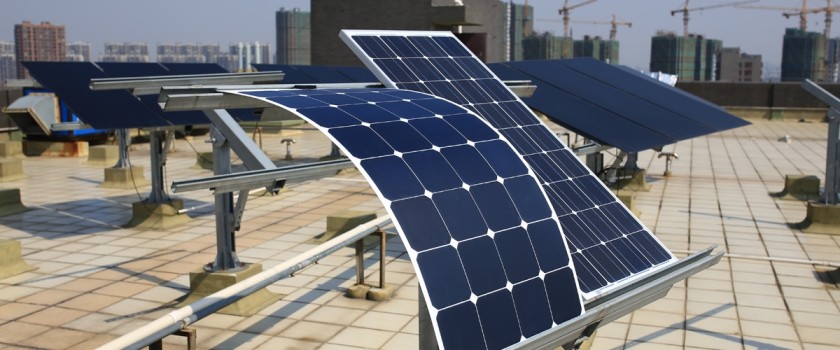
Thin film panels are worth considering if you need a less expensive option in the solar industry. They have a lower temperature coefficient than the other two panel types.
Producing thin film panels involves placing a layer of CdTe between transparent conducting layers to capture sunlight.
Thin film solar cells are the simplest to manufacture, fabricated by placing one or more films of photovoltaic material (like silicon or cadmium) onto a substrate.
Thin film solar cells are also flexible, which allows for a wide range of alternate uses and are less damaged by high temperatures. They're great for any home with limited roof space!
Generally, the power capacity per square foot of monocrystalline or polycrystalline solar panels will exceed the technology of one thin-film panel.
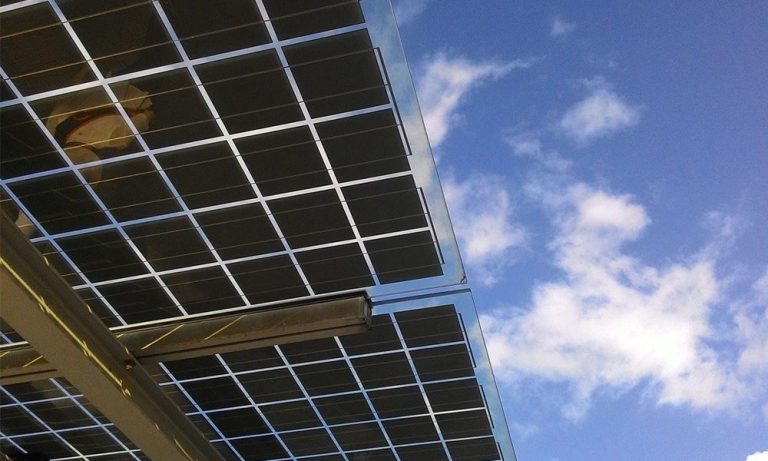
Bifacial solar cells can absorb sunlight from both sides and convert it into green electricity. The backing sheet reflects light that strikes between the solar cells on the underside.
This type of solar panel can generate 10-20% more power output than monoracial (conventional) panels.
However, this efficiency comes at a cost. Bifacial panels typically cost up to 15% more than mono facial panels.

A hybrid system is one in which your solar panels are still connected to the power cables of the grid and have a backup battery system to store extra power.
Solar battery installation ensures you won't waste excess power.
The energy captured by the solar panels from the sun is converted into useful electricity via an inverter. Electricity is then routed to your home, batteries, or the grid.
The advantage of this type of solar panel is that you'll always have power.

Concentrated photovoltaic (CPV) solar cells basically work like regular photovoltaic systems; CPV cells create electricity!
Some refer to these multi-junction solar panels as the greatest of all photovoltaic systems, likely due to their efficiency rate of up to 41%!
Thanks to their construction, CPV cells are more efficient than other solar panels: curved mirror surfaces, lenses, and even cooling systems are utilised to bundle the sun's rays in a high-efficiency package.
As a result, CPV cells have become one of the most efficient solar panels, with up to 41% performance and high efficiency.
Instead of crystalline solar panels, thin-film panels are built of different materials, including:
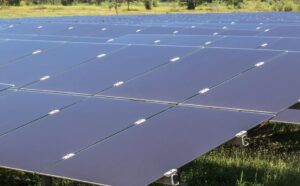
Among the several forms of solar panels, this photovoltaic approach uses Cadmium Telluride, which allows for producing solar cells at a low cost.
This solar energy technology requires the least quantity of water to produce. CdTe solar cells are great for reducing your carbon footprint.
The only disadvantage of employing Cadmium Telluride is the risk; this photovoltaic substance is hazardous when consumed or inhaled.
This is one of the most difficult barriers to overcome, particularly in Europe, where many people hesitate to employ the technology underlying this solar panel.
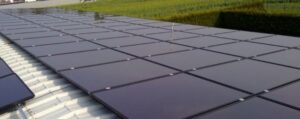
Have you ever used a pocket calculator fueled by the sun? Yes? Then you've most likely seen these kinds of solar panels before.
Amorphous silicon solar cells are often the most commonly seen in pocket calculators, making them one of the more popular solar panel options among several types of solar panels!
This sort of solar panel employs the greatest thin film technology, which is triple-layered.
The reason why having this solar panel as the greatest thin film technology is important is that we're talking about a thickness of 1 micrometre (one millionth of a metre.)
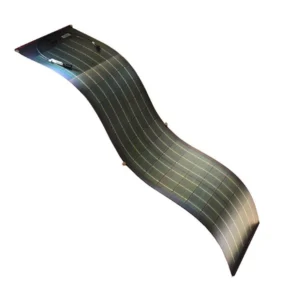
CIGS panels put a thin layer of copper, indium, gallium, and selenium coating on a glass or plastic backing. It has an efficiency rating of 13-15%.
This type of solar panel combination produces the best efficiency among thin film solar panel varieties, albeit not as efficient as crystalline panels.
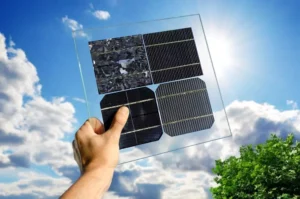
Below, we've highlighted several major concerns for consumers considering solar panel types and how to choose the best panel.
Solar panels are subjected to hail testing.
To simulate hail impacts, UL 1703 and UL 61703 standards drop 2-inch solid steel spheres on solar panels from a height of 51 inches and fire 1-inch ice balls on PV panels.
Crystalline panels can withstand hail at up to 50mph due to their sturdier construction, whereas thin-film panels tend to have a lower rating due to their thin and flexible nature.
While there is no explicit solar hurricane classification rating, the Department of Energy recently extended its recommended design criteria for solar panels to protect against extreme weather.
Among the new guidelines are the following:
If the amount of sunshine your panels can convert into energy is your sole issue, we recommend obtaining a set of monocrystalline panels.
They have the greatest efficiency rating on the domestic market and are your best choice for lowering energy expenditures.
Because monocrystalline panels are the most expensive, they may be out of the question if you're on a tight budget.
In this scenario, polycrystalline solar panels are preferable since the upfront expenses are lower and absorb energy more efficiently than thin film panels.
Durability is important because your panels will be exposed to the elements. Get tougher panels to insure your system against breakdowns.
It's advisable to ask about the long-term endurance of solar panels while dealing with solar firms.
A warranty is in place to protect your rights as a consumer, so it's another important factor to consider.
Work with a provider who'll provide you with an appealing warranty period.
Because new types of solar panels are being produced and commercially available, you will most likely make changes over time.
Even if you have ample roof space, you must consider choosing the proper solar panel size when browsing for possibilities.
Panels demand more roof space because they generate electricity per square meter. This might assist you in planning your entire configuration arrangement.
The average cost per watt for the different types of solar panels is shown below and is crucial to consider when evaluating how much you may expect to pay for your solar panels.
Because of their manufacturing process and higher power capacity, monocrystalline solar cells are the most expensive of the three solar panel types.
As the manufacturing process and overall solar panel technology have improved, the price differential between monocrystalline and polycrystalline panels has narrowed significantly.
Most monocrystalline panels are currently around £1 to £1.50 per watt more expensive than polycrystalline modules.
Polycrystalline panels have historically been the most affordable alternative for homes adopting solar without significantly losing panel performance.
Polycrystalline panels now cost £0.90 to £1 per watt. It accounted for a sizable market share in residential solar panel installations between 2012 and 2016.
However, as previously stated, the price difference between monocrystalline and polycrystalline panels is closing.
More homes are now willing to spend a slightly higher price for monocrystalline panels with much-improved efficiency and solar power ratings.
Thin film solar panels are the least expensive of the solar panels types, owing to their ease of installation and low equipment requirements.
You'll pay around £1.04 per watt for thin-film solar panels or roughly £6,240 for a 6 kW system.
However, they have far lower efficiency capabilities and require significant land to create enough electricity for power generation.
The look of the different types of solar panels differs due to variances in materials and production:
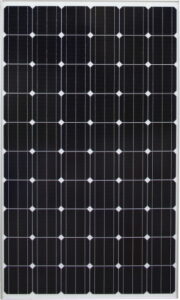
A solar panel with a black solar cell is almost certainly a monocrystalline panel. Because of how light interacts with a single silicon crystal, this solar cell seems black.
While the solar cell is black, the back sheets and frames of monocrystalline solar panels come in various colours.
The back sheet of monocrystalline panels is usually black, silver, or white, and the metal frames are usually black or silver.
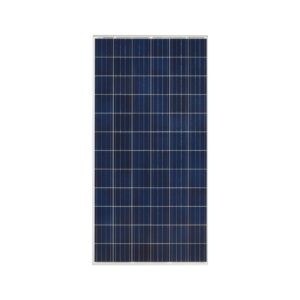
Polycrystalline solar cells have a bluish tint because light reflects off the silicon fragments in the cell differently than it does off a pure monocrystalline silicon wafer.
Polycrystalline panels, like monocrystalline panels, have varied colours for the back sheets and frames.
The frames of polycrystalline panels are often silver, while the back sheets are either silver or white.
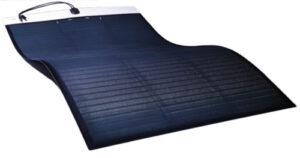
Thin-film solar panels' most distinguishing visual feature is their thin, low-profile design. These thin film panels are less affected by high temperatures.
The panels' photovoltaic cells are approximately 350x thinner than the crystalline wafers found in mono and polycrystalline panels.
A full thin-film panel can be just as thick as a monocrystalline or polycrystalline solar panel if it has a substantial frame.
You can either get adhesive thin-film panels which are installed as-close-as-possible to a roof's solid surface, or more durable thin-film panels with 50mm-thick frames.
Then there are colour choices: Thin-film modules come in either blue or black, depending on their material.
The following steps explain solar panel installation for an entire roof:
Because solar panel requirements vary widely based on needs and geography, solar panel components specific to your project must frequently be acquired from a store.
If feasible, order everything you'll need all at once to guarantee that all materials are suitable.
The solar panel mounting system must then be installed. This will act as a foundation for the solar panels.
To maximise solar exposure, the entire mounting structure must be inclined at an inclination ranging from 18 to 36 degrees.
After placing the mounts, the solar panel must be mounted on the mounting structure. Make sure to tighten the bolts and nuts to keep them stable.
Depending on how the system will be utilised, connect the power inverter directly to the electrical panel using the device instructions.
Finally, turn on the electricity and test the freshly installed solar panel system. The solar panel installation process is then done.
But what about the cost of solar panel maintenance? Solar panels only need maintenance two to four times a year, but check your solar company's manual for maintenance care.
Monocrystalline, polycrystalline, and thin-film panels each have pros and cons, and the solution you should pursue depends on your property and your solar project goals.
Understanding the variations between the types of solar panels, let alone the possibilities provided by the brands, can be difficult.
Most solar panel installation firms will suggest a panel type and brand based on the needs of your home and your budget.